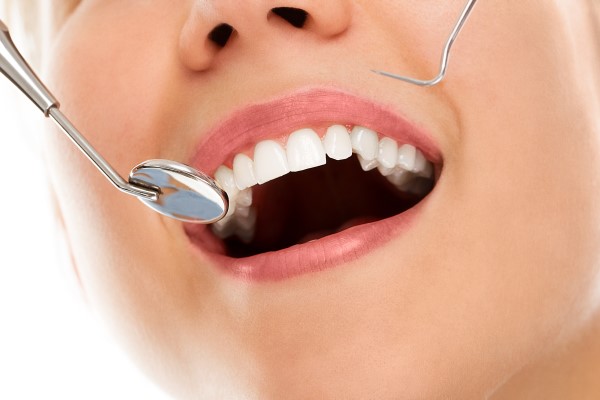How a Dentist Treats Gum Infection as Part of Periodontal Disease Treatment

Periodontal disease is a condition that affects the gum and the bone tissues supporting the teeth. The gum infection that causes the condition starts from the accumulation of plaque, a sticky bacteria film. When plaque is not cleaned off the teeth, it hardens into tartar, which could cause a gum infection. If a gum infection goes untreated, the result is often periodontal disease.
Treating a gum infection
Periodontal disease is common and tends to go undiagnosed in many people. It is not just the leading cause of tooth loss, but it could also be linked to other conditions like stroke, diabetes and cardiovascular disease. Without treatment, gum inflammation can extend to areas below the gum line. Plaque contains acid or toxins that cause gum irritation, triggering a chronic inflammatory response that can cause further deterioration of the bone and soft tissue.
Since a gum infection is often symptomless, it might take a visit to the dentist to detect the condition. Obvious symptoms are bleeding and deep pockets between the gums and teeth, signaling the damages being done to the soft tissues and bone. The following are potential periodontal disease treatments that can be used for a gum infection:
Professional teeth cleaning
This process involves removing the plaque and tartar accumulation on the tooth's surface. Tartar is hardened plaque deposits on the teeth, which is responsible for gum infection. Plaque can be removed with regular brushing, but once they have hardened, only a professional cleaning can get the job done. The dentist will remove all traces of plaque and tartar from along and below the gum line. The procedure is typically done during a routine dental checkup, but for patients with a case of periodontal disease, the dentist might recommend more regular cleaning.
Scaling and root planing
Also called deep cleaning, scaling is a nonsurgical treatment for a gum infection that is performed under local anesthesia. It involves scraping away tartar or hardened plaque deposits from around the teeth and gums using dental tools. Planing is done to smoothen rough areas around the tooth root and it removes bacteria that may have accumulated in those areas. Smoothing those rough spots encourages reattachment of the gums as part of the periodontal disease treatment.
Antibiotics
The dentist can control gum tissue inflammation that accompanies a gum infection with antibiotics like minocycline or chlorhexidine. The product is placed in the periodontal pocket between the gums and the teeth to fight bacteria.
Tissue regeneration
If the bone and gum tissues have been damaged due to the gum infection, the dentist can promote active tissue regrowth with grafting procedures. The procedure often entails taking tissues or bone fragments from other areas of the oral cavity like the mouth roof and inserting it between the gum and bone tissues. The graft allows the bone and connective tissues to regenerate.
Pocket reduction
When root planing and scaling are not enough for gum reattachment, the dentist may perform a pocket reduction procedure as part of periodontal disease treatment to diminish the pocket size between the gums and the teeth.
In conclusion
Stopping a gum infection is necessary for periodontal disease treatment. If there are noticeable signs of gum disease, book an appointment with a dentist right away.
Request an appointment here: https://www.aboutdentalcare.com or call About Dental Care at (435) 359-0147 for an appointment in our St. George office.
Check out what others are saying about our dental services on Yelp: Periodontal Disease in St. George, UT.
Recent Posts
The CDC states that gum disease, also known as periodontal disease, is one of the leading oral infections in the United States. In addition, the National Institute of Health cites it as the most common culprit for adults losing teeth. Because the early stages of periodontal disease often do not have noticeable symptoms, many patients…
Gum disease starts with the growth of bacteria in the mouth. When brushing or flossing does not remove this bacteria, harmful plaque accumulates and hardens into tartar. The collection of tartar along the gum line results in gingivitis, which can worsen into periodontal disease. Symptoms of this disease can be mild in the early stages,…
Gum disease is one of the most common issues that dentists treat. It is most likely to affect people over 30, and the bacteria that live inside the mouth cause it. Also known as periodontal disease, gum disease develops when bacteria infect gum tissues.Poor oral hygiene is one of the leading risk factors for gum…
Gum disease, also commonly known as periodontal disease, starts when plaque builds up under and along your gumline. Plaque is a sticky film that forms on people’s teeth. It usually causes infections that harm the gum and bone. This leads to gum disease as well as tooth decay.If left untreated, gum disease can cause the…


